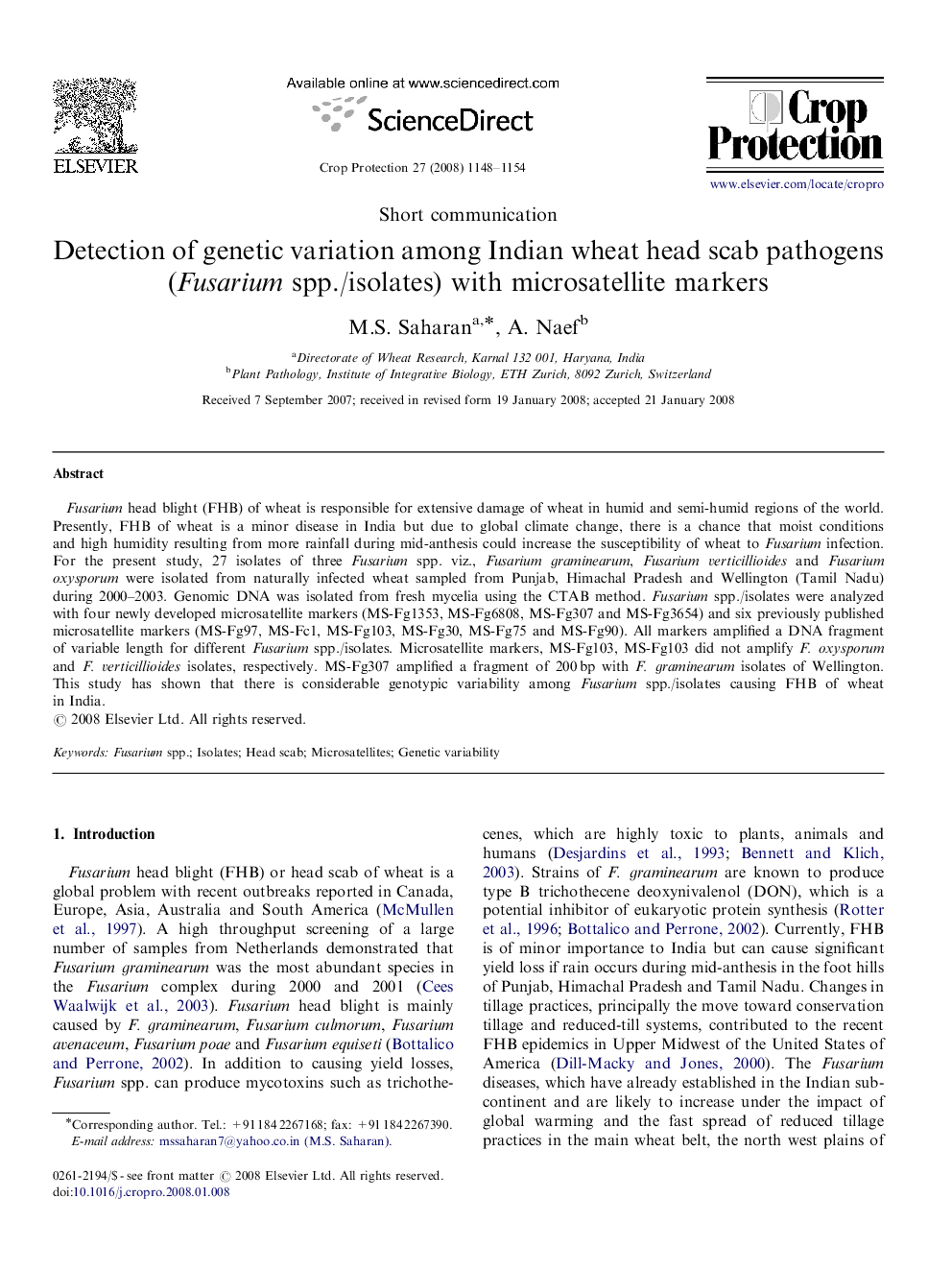| Article ID | Journal | Published Year | Pages | File Type |
|---|---|---|---|---|
| 4507763 | Crop Protection | 2008 | 7 Pages |
Fusarium head blight (FHB) of wheat is responsible for extensive damage of wheat in humid and semi-humid regions of the world. Presently, FHB of wheat is a minor disease in India but due to global climate change, there is a chance that moist conditions and high humidity resulting from more rainfall during mid-anthesis could increase the susceptibility of wheat to Fusarium infection. For the present study, 27 isolates of three Fusarium spp. viz., Fusarium graminearum, Fusarium verticillioides and Fusarium oxysporum were isolated from naturally infected wheat sampled from Punjab, Himachal Pradesh and Wellington (Tamil Nadu) during 2000–2003. Genomic DNA was isolated from fresh mycelia using the CTAB method. Fusarium spp./isolates were analyzed with four newly developed microsatellite markers (MS-Fg1353, MS-Fg6808, MS-Fg307 and MS-Fg3654) and six previously published microsatellite markers (MS-Fg97, MS-Fc1, MS-Fg103, MS-Fg30, MS-Fg75 and MS-Fg90). All markers amplified a DNA fragment of variable length for different Fusarium spp./isolates. Microsatellite markers, MS-Fg103, MS-Fg103 did not amplify F. oxysporum and F. verticillioides isolates, respectively. MS-Fg307 amplified a fragment of 200 bp with F. graminearum isolates of Wellington. This study has shown that there is considerable genotypic variability among Fusarium spp./isolates causing FHB of wheat in India.
